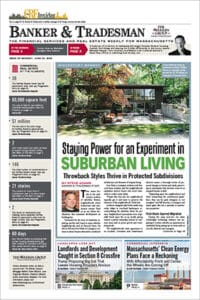
Roger Herzog
In 1978, then-state Rep. Mel King introduced legislation that created the Community Economic Development Assistance Corp. (CEDAC), the nation’s first state agency designed to provide technical assistance to the burgeoning nonprofit community development movement.
The idea of such an agency grew out of the Wednesday Morning Breakfast Group meetings convened by Mel at MIT with community activists and planners. In Boston, the group’s primary focus was the desire to establish community control over the redevelopment of acres of land in the heart of neighborhoods in the southwest area of the city that the state had taken by eminent domain for an Inner Belt highway. The highway was stopped through community activism and by 1978, it had become clear that there was a need for an agency like CEDAC.
In the 40 years since we were established by an act of the legislature, Massachusetts and the community development sector have changed tremendously, and so has CEDAC. We started as an economic development organization that provided technical assistance to community-based nonprofits focused on small business development and job creation. But as the commonwealth’s economy changed, we’ve evolved into a community development financial institution that provides early–stage financing and technical assistance to nonprofits seeking to produce and preserve affordable housing and nonprofit early education facilities, through our affiliate, Children’s Investment Fund.
While it’s not easy to sum up 40 years of community development work, with its complications and challenges, the best way to share our accomplishments is to look at a sample of some of the nonprofit development projects we’ve assisted:
Preserving affordable housing – The Chapman Arms story: Since the early 1980s, CEDAC has fought to preserve the long-term affordability of subsidized multifamily housing, which is threatened by the time-limited use restrictions used as part of federal and state financing programs in the 1960s and 1970s. In 2009, the state passed an affordable housing preservation law, Chapter 40T, which provided the commonwealth with new tools to monitor and address this expiring use challenge. One of the key tools is purchase rights that allow the commonwealth’s Department of Housing and Community Development (DHCD) or its designee to acquire and preserve expiring affordable housing projects if an owner proposes to sell a building. In 2011, Chapman Arms, in Cambridge’s Harvard Square, became the first major project whose affordability was preserved through the use of Chapter 40T’s purchase rights. CEDAC delivered technical assistance to DHCD and its nonprofit designee, Homeowner’s Rehab Inc., as well as a rapid commitment and closing on acquisition financing to preserve this mixed income 50-unit property.
Revitalizing neighborhoods – Northampton’s Live 155: Last year Way Finders, a community development corporation (CDC) focused on Western Massachusetts, opened Live 155 in Northampton. The mixed-use, mixed-income, new construction development of 70 apartments has helped to transform an important neighborhood in that city, a gateway into the downtown district. CEDAC provided $2.6 million in early–stage acquisition and predevelopment funding for that project, and similarly provided financing for Lumber Yard Apartments, a project by the Valley CDC across the street. These two projects have spurred significant public investment from the city, the state, and private partners.
This is only one recent example of the effective role of CEDAC’s early–stage assistance that supports community nonprofits’ transformative efforts. Boston’s Jackson Square (where the original neighborhood battle against highway construction was waged) and Worcester’s Kilby-Gardner-Hammond are also examples where we’ve worked with community partners to reinvigorate those neighborhoods.
Supporting equitable transit-oriented development – The Residences at Fairmount Station: Late last year, Southwest Boston CDC and its development partner Traggorth Companies opened the Residences at Fairmount Station in Hyde Park, a 27-unit affordable housing development. The Residences represent equitable transit-oriented development: affordable housing built near the MBTA’s new Fairmount Corridor commuter rail line. Locations near transit offer opportunities for increased development density, and CEDAC and its financing partners provided $1.2 million in acquisition and predevelopment financing to ensure that low– and moderate–income residents can access these desirable locations.
CEDAC is celebrating our 40th anniversary at an event this March and we will honor Mel King for both his vision and his belief in the power of people to strengthen their communities. In the four decades since he introduced that legislation, Massachusetts has evolved into a national model of community development, in large part because of the institutional framework he helped to create. It’s gratifying for us to look at the innovative projects above and recognize we are carrying on an important legacy.
Roger Herzog is the executive director of the Community Economic Development Assistance Corp.





